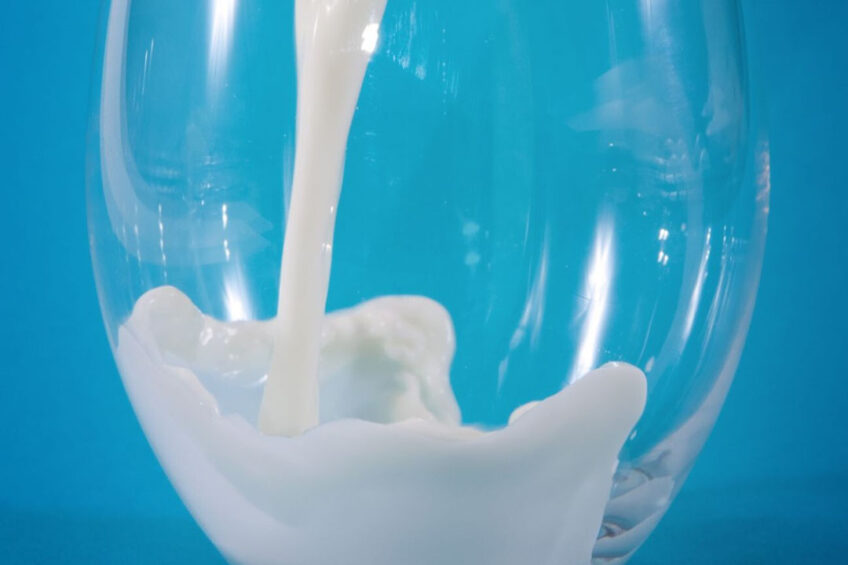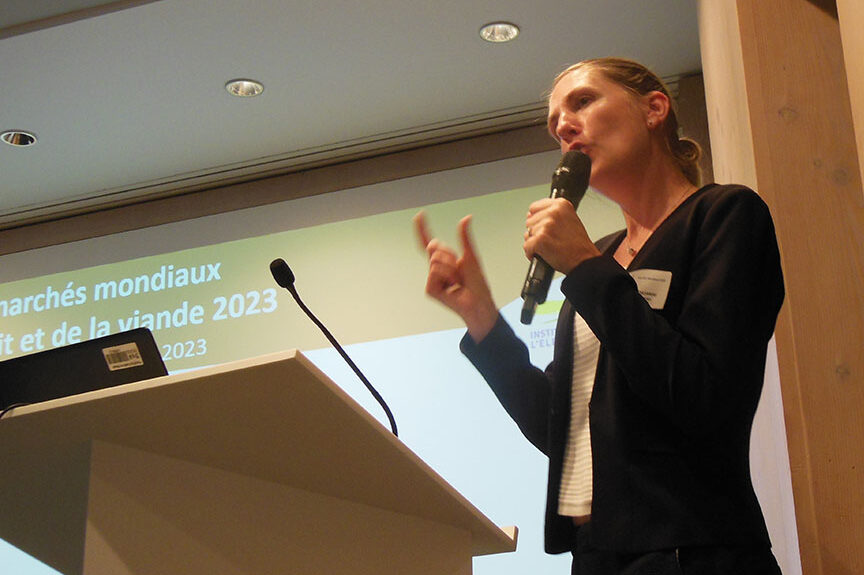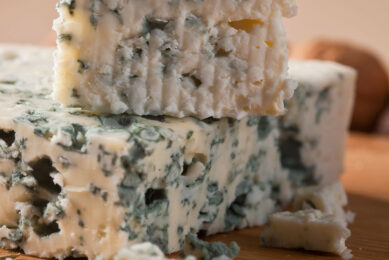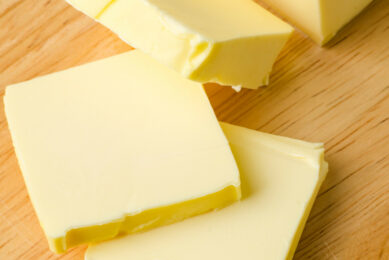Overview of dairy inflation in Europe

Dairy Global takes a detailed look at inflation in European countries and the impacts on dairy products such as milk, cheese and butter. And in a further dive, the Idele conference in Paris in June this year explored record food inflation, consumption and trade of dairy.
In her presentation, Christine Goscianski from the Idele economy service reminded the audience that 2022 was marked by record food inflation. EU-27 saw food consumer price growth of almost 12% in 2022 compared to 2021. This growth was lower in some countries such as Ireland (+6.9%) and France (+7%) and higher in others (+12.6% in Germany, +13% in Portugal, +14.5% in Poland). This increase in food prices was accompanied by an increase in the market share of distributor brands (+2.3% in Spain, +1.4% in Germany, +0.5% in France).

“The beginning of 2023 was marked by a sharp acceleration in the rise of food prices in Europe, with an increase in sales of consumer products at discount (+1 point between January 2022 and January 2023),” said Goscianski, who added that the consumption of dairy products nevertheless held up rather well in 2022 in the EU-27, but should fall in 2023 under the effect of high food inflation.
Germany: Record food inflation
In 2022, Germany experienced an increase of 20-40% in the price of dairy products compared to 2021: +21% for Emmental and UHT milk, +22% for Gouda, +41% for butter. This led to a decline in purchases of dairy products, which was marked in liquid milk (-6% over the last 12 months, -9% in March 2023) and fresh cheeses (-7% over the last 12 months, -9% in March 2023).
Following a sharp rise in prices that impacted the organic market, organic milk is losing market share to vegetable juices and pasture milk. Finally, the inflation of food products in Germany led to an increase in trade in dairy products, affecting both exports and imports.
France: Fall in trade balance
In France, there are 4 aspects to consider regarding inflation:
- +7.9% increase in the prices of dairy products in 2022 in stores, with the highest increase for dairy fat (+11.7%) and even higher in-store prices in early 2023;
- a -2.5% decrease in dairy product sales in 2022 in stores, the largest drop being for butter (-6.8% over 12 months);
- consumer arbitrage: buy less and downscale (increasing use of private label ranges, fewer organic products purchased, success of discounters);
- a strong deterioration of the trade balance, with an explosion of imports in value.
Italy: Inflation among the lowest
Despite food inflation being among the lowest in Europe, Italy experienced a rise in food prices of 10-20% in 2022, depending on the product: +9.8% for UHT milk, +20.8% for butter.
“The start of 2023 is marked, however, by a slowdown in this rise in food prices, particularly those of dairy products,” said the speaker, who added that the discount market share has grown from 17.5% of sales in value in 2019 to 20.6% in 2022, despite a very sharp rise in prices in this channel.
The share of organic in Italian household purchases fell from 3.9% in 2021 to 3.6% in 2022. The year 2022 also saw an increase in trade in value with inflation (both for imports and exports) but a contracting balance.
UK: Strong inflation
Food prices rose by 16.9% in 2022 and soared in early 2023 (+33% for milk, +39% for cheddar cheese in April 2023). While sales of dairy products are down, cheese is holding up better.
“We also observe a fall in the range of the consumption of dairy products, and branded milk volumes are declining at a faster rate than private-label products,” said Goscianski.
Sales in volume of organic milk are down sharply (-13.5% in 2022/2021 compared to -5.6% for non-organic milk). In 2022, organic dairy products represented 2.9% of the total retail volume of dairy products. Finally, as for the other European countries, exports in volume are progressing but with a balance that is deteriorating in value.
Conclusion
Food products are now affected more by inflation than other products:
- Consumption prices: +9.1% in EU-27
- Food prices: +18.2% in EU-27
Source Eurostat: Jan-April 2023/Jan-April 2022
- Among food products, dairy products are highly impacted by inflation
- Arbitrage of consumers facing inflation: smaller quantities purchased, more private label, less organic, discount success. Sales of dairy products in stores seem to be doing better.
Purchases in stores in France in 2022 (in volume):
- Beef: -6.4%
- Eggs: -1.6%
- Dairy products: -2.5%
- Fruits and veg: -5%
- Fish: -12%
General lower inflation for a few weeks, with food inflation down slightly in May.
Join 13,000+ subscribers
Subscribe to our newsletter to stay updated about all the need-to-know content in the dairy sector, two times a week.










